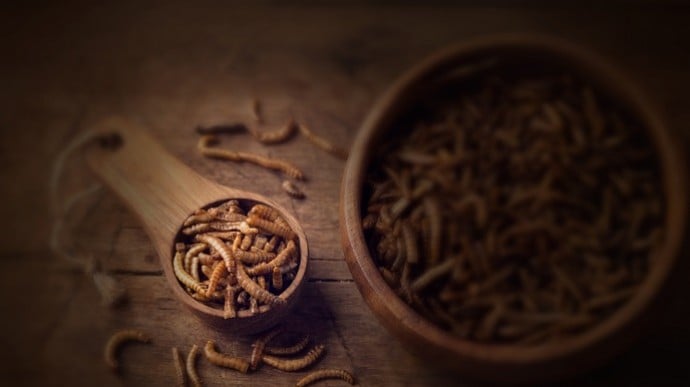Experts at the University of Pretoria (UP) are a step closer to finding a drug that could prevent transmission of the malaria-carrying parasite Plasmodium falciparum by thwarting its life cycle.
Sephora Mianda Mutombo, a PhD candidate in the Department of Chemistry at UP, was the lead author of a study published in the Journal of Ethnopharmacology that investigated the indigenous succulent Aloe marlothii for its ability to kill or stop the proliferation of malaria parasites.
The study found that natural active ingredients in the roots of this aloe species have anti-plasmodial properties that have the potential to kill all the phases of the malaria-carrying Plasmodium falciparum parasite and block the all-important transmission.
“The parasite that causes malaria has a very complex life cycle, which occurs in two hosts: humans and Anopheles mosquitoes,” Mutombo explains. “In humans, the parasite goes through distinctive stages of development in the liver, then the bloodstream by infecting red blood cells. This is known as the asexual intra-erythrocytic cycle of development. A small portion of asexual parasites commit and differentiate into sexual forms of the parasite known as gametocytes [males and females].”
These are the terminal parasitic stages of the parasite, which is transmitted to the mosquito when the insect feeds on the blood of an infected person. The sexual cycle of the parasite then takes place in the mosquito.
“All antimalarial drugs, with the exception of primaquine, target the asexual stages of the parasites, meaning they kill the parasites during their asexual intra-erythrocytic cycle of development,” Mutombo explains. “So an individual who has been treated for malaria with antimalarial drugs that are currently on the market can still transmit the parasite to mosquitos, because the sexual forms of the parasite were not killed.
“Therefore, to contribute to the eradication of malaria, we need compounds that will kill the sexual forms of the parasites, thereby preventing the transmission of Plasmodium from human to mosquitos.”
Southern Africa is known for its rich biodiversity and traditional knowledge, and is a significant source of natural compounds that can be developed for the treatment of malaria, yet no approved treatments from the region have come to fruition. This is unsurprising, however, as it is estimated that out of every 10 000 samples, only one is approved by the US Food and Drug Administration as a drug or pharmaceutical. It could be that a systematic investigation of Southern African resources has not been undertaken, and that the research process is fragmented rather than collaborative.
“In order to increase the chances of success, modern-day drug discovery now relies on the use of a library of samples for a high throughput of biological assaying against diseases such as malaria, together with hyphenated analytical techniques to rapidly identify bioactive compounds,” Mutombo says.
UP’s biodiscovery centre hosts a plant materials repository that contains more than 11 000 plant samples systematically collected throughout South Africa. The centre is under the directorship of the Department of Chemistry’s Professor Vinesh Maharaj, Deputy Dean of Research and Postgraduate Education at UP’s Faculty of Natural and Agricultural Sciences, and a co-author of the study. A natural product library is being built from these samples, which are a collection of extracts, purified fractions and compounds obtained, stored in standardised formats in robotic freezers and readily deliverable to biological screening assays. The information associated with each sample is stored in a database.
Mutombo’s work was done on 300 samples from the library in conjunction with modern technologies to assist in rapid identification of antimalarial drug candidates from plant material stored in the repository.
“We can use all of these resources to contribute to malaria eradication, bearing in mind that malaria is still one of the most severe public health problems worldwide, especially in Africa,” Prof Maharaj said. “The huge burden of malaria cases and death is carried by the African region, and accounts for about 95% of malaria cases and 96% of malaria deaths. Sadly, children under five years old make up an estimated 80% of all malaria deaths. Clearly this is an African problem and as Africans, we would like to contribute to the solution.”
Click on the infographic in the sidebar to learn more about how malaria is spread and how this drug aims to stop its transmission.
Sephora Mianda Mutombo and Professor Vinesh Maharaj
February 9, 2023

Sephora Mianda completed her undergraduate studies in Pharmaceutical Sciences at the University of Kinshasa in the Democratic Republic of the Congo (DRC). In 2017, she embarked on a master’s degree in Chemistry at the University of Pretoria (UP), and completed it two years later under the supervision of Professor Vinesh Maharaj. Mianda says she chose to register at UP because she regards it as one of the best universities in Africa and because its laboratories are well equipped for conducting research.
Mianda works with the Department of Biochemistry, Genetics and Microbiology and UP’s Institute for Sustainable Malaria Control, which is under the leadership of Prof Lyn-Marié Birkholtz. She is also part of the Biodiscovery Research Team at UP.
“We are investigating different South African medicinal plants to identify compounds that have active components [that can work] against several diseases,” she explains. “Some of the researchers are targeting cancer; others are looking at SARS-CoV-2, inflammation, HIV and more. I am targeting malaria.”
Mianda’s field of research contributes to the betterment of the world because many drugs used today are derived from natural products, which play a considerable role in the discovery and development of new pharmaceuticals.
“We need to carry on investigating natural products to find a cure for diseases that the world is facing,” she says.
A recent highlight for Mianda has been her research into plants species that has seen her isolating several compounds that have been tested for their anti-plasmodial activities; some have shown promising results.
Mianda says she loved chemistry at high school, and when she met Prof Sylvie Bambi, who is also from the DRC and who was a PhD student in Belgium at the time, she became interested in drug discovery research.
“That’s why I studied Pharmaceutical Sciences for my undergraduate degree and chose early-drug discovery as the subject of my master’s and PhD.”
Her interest in natural products was fostered during her internship with Prof Gerhard Bringmann, a leading scientist in the field of natural products chemistry, at the University of Würzburg in Germany.
“I was doing syntheses of natural compounds at the time, but was fascinated by other group members presenting new compounds that they had isolated from plants and demonstrating how they had used nuclear magnetic resonance spectroscopy to determine the structures,” she recalls.
As for academic role models, Mianda says, “I have been inspired by my supervisors, Prof Vinesh Maharaj and Prof Gerhard Bringmann. But being a woman, I tend to look up to other women in academia and one of them is UP’s Prof Namrita Lall.” Prof Lall, of the Department of Plant and Soil Sciences, holds the National Research Foundation/Department of Science and Technology Chair in Indigenous Knowledge Systems.
Mianda hopes to find compounds that will take anti-malarial drug discovery and development further. The Biodiscovery Research Team’s research because they are looking for solutions to problems faced by humanity.
“As long as there are diseases in the world, we will need ways to treat them, and drugs are one of those ways,” she says. “The development of drugs starts with the identification of active compounds; these may be natural or synthetic, but we need to identify them.”
Her advice to school learners or undergraduates who are interested in her field is to do something that they love while contributing to finding solutions to global problems, as there is reward in that.
In her free time, Mianda loves the outdoors and reading, especially spiritual books and mysteries and thrillers.

Prof Vinesh Maharaj, a natural product chemist trained in discovering new pharmaceutical ingredients based on biodiversity samples, is the Deputy Dean: Research and Postgraduate Education in the Faculty of Natural and Agricultural Sciences (NAS).
Before this appointment, he was the Head of the Department of Chemistry from September 2016.
Prof Maharaj has published widely in peer-reviewed journals and has supervised to completion of several master's and doctoral students. He was recently awarded funding of over R35 million by the Department of Science and Innovation for the creation of a Biodiscovery Centre at the University. This includes establishing a high-end robotic system to create a repository of natural products, including compounds ready for high throughput biological screening programmes of pharmaceutical interest. Recently he joined a core team set up by DSI for the discovery of natural products for the treatment of COVID-19 (SARS-Cov-2).
 Story
Story
Cricket à la king? How about a yellow mealworm burger? Foods that may previously have evoked a ‘yuck’ response are now firmly on the menu. Research into edible insects by the Department of Zoology and Entomology at the University of Pretoria (UP) is exploring how to rear and harvest this food of the future.
 Story
Story
A single query to ChatGPT uses as much electricity as burning a light bulb for about 20 minutes. Multiply that by the millions of requests that this artificial intelligence (AI) chatbot receives each day, and the environmental impact is ominous.
 Story
Story
University of Pretoria (UP) researchers have found that the antioxidant content of certain types of tea can be likened to that found in recommended portions of fruit and vegetables.
Copyright © University of Pretoria 2025. All rights reserved.
Get Social With Us
Download the UP Mobile App